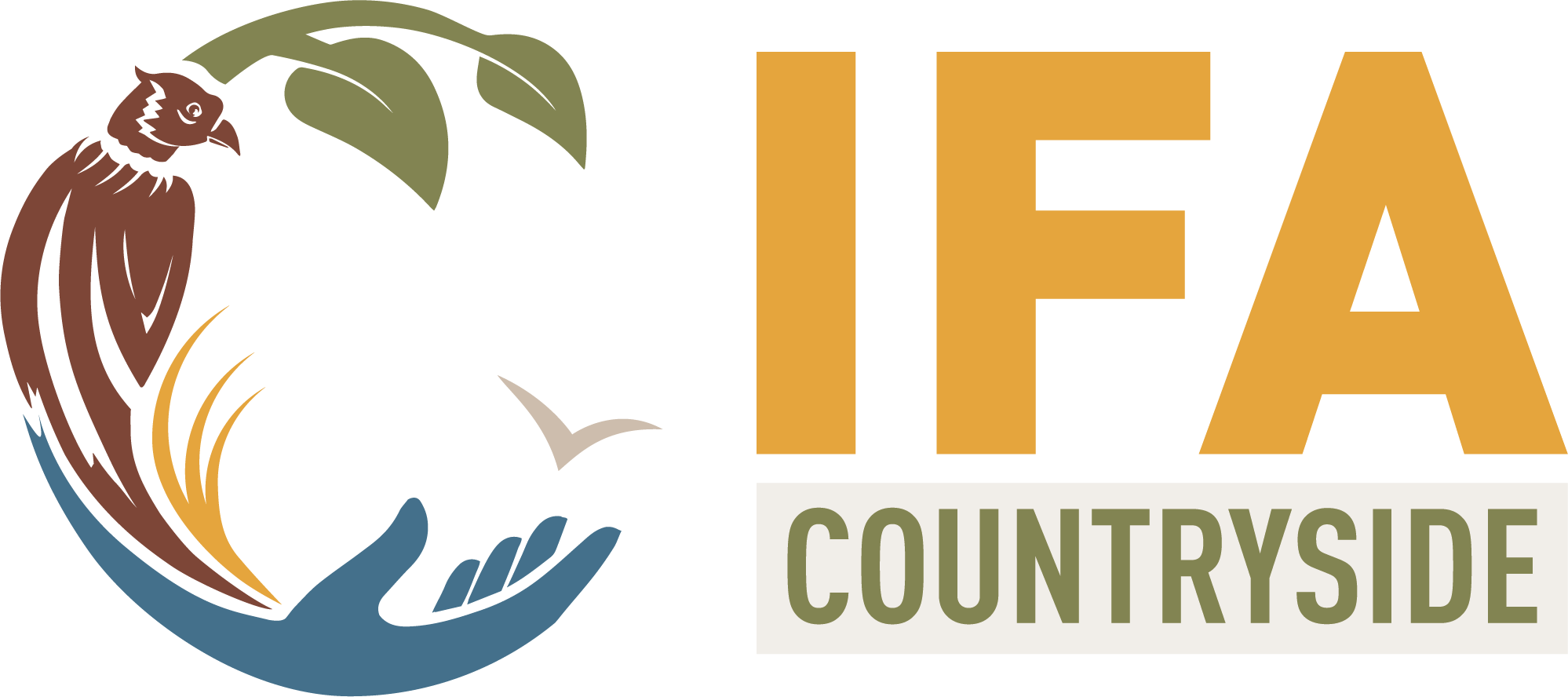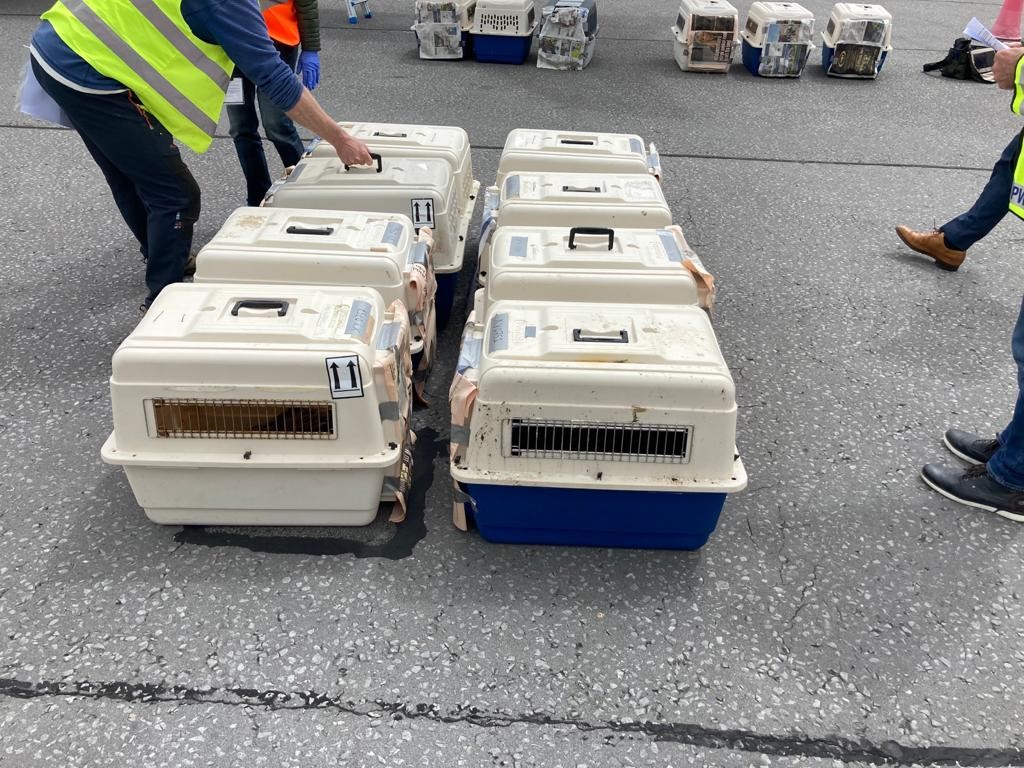23 White-tailed eagle chicks arrived in Kerry Airport on Friday June 25th, as part of a long-term wildlife reintroduction project that is being led by the National Parks and Wildlife Service (NPWS) at the Department of Housing, Local Government and Heritage. The 2021 phase of this landmark collaboration to restore a native and once-extinct bird to Irish skies will see the release this year of the young eagles at four sites across Munster, including Killarney National Park, along the River Shannon, the lower Shannon estuary, and a site in Waterford.
The chicks were collected this June from nests throughout the Trondheim area of West-Central Norway by the Norwegian Institute for Nature Research and flown to Kerry Airport. They will be held for 6-8 weeks at purpose-built flight cages at four sites in Munster, where they will be cared for and monitored by NPWS, before being released into the wild in early-mid August.
As they mature, these chicks will join and strengthen the small Irish breeding population that has become established since the reintroduction programme began in 2007.
Minister for Heritage and Electoral Reform, Malcolm Noonan TD, said: “This is an incredibly exciting and technically complex project whose success depends on the collaboration of many groups, including our NPWS teams, local farmers, conservationists and communities, the Norwegian Authorities and many other partners in Norway. Their collective efforts over many years have brought us to this point. I’d like to pay tribute to all involved and acknowledge their commitment to making this project a success, now and in the years to come.”
He continued: “White-tailed eagles are magnificent birds and, as top predators, they also play a key role in the functioning of ecosystems. Having been driven to extinction in the 19th Century as a result of human actions, this reintroduction project is delivering real impact for the species. Despite the many challenges that remain, 2021 will mark the rare success of three Irish-born chicks fledge from a single nest on Lough Derg. I was privileged to release six of these stunning creatures last year in Kerry and I can honestly say that watching them soar through the skies on their first Irish flight is a memory that will stay with me for the rest of my life. I’d like everyone in Ireland to have the opportunity to observe this once-extinct species in its natural habitat.”
Minister for Housing, Local Government and Heritage Darragh O’Brien commended the National Parks and Wildlife Service staff for their dedication to the reintroduction programme.
“We have seen the dedication of NPWS staff and their stakeholders on the ground over the past 14 years to reintroduce White-tailed Sea Eagles throughout Ireland and beyond. I was delighted to learn that in 2020 and 2021 ten White-tailed Eagle pairs held territory in Ireland across four counties, and that at least nine pairs laid eggs. Historically, the White-tailed Sea Eagle was once a conspicuous part of the Irish landscape, before it was driven to extinction in the 19th and early 20th century by human persecution. Thanks to human intervention, our NPWS is bringing this iconic species back.”
Last year (2020), ten eagles were released along the River Shannon. Nine of those ten birds survived their first year, and currently they are dispersed at a number of locations in Ireland, and one is in Scotland. Previously, 100 young White-tailed Eagles were released in Killarney National Park between 2007 and 2011. Birds from these releases subsequently dispersed widely throughout Ireland with first breeding in 2012 on Lough Derg, Co. Clare.
Since then a small breeding population of 8-10 pairs have successfully fledged over 30 chicks, with an additional five chicks likely to fledge into the wild in Munster in the next few weeks. Indeed, this year one nesting pair on Lough Derg has produced three chicks, which are due to fledge shortly. This is uncommon, even in the very extensive wild populations in Norway.
Some Irish-bred eagles are now reaching maturity and starting to breed in the wild themselves. However, a scientific review of the reintroduction project indicated the small population is still vulnerable to mortality factors such as illegal poisoning. The breeding population was also negatively impacted by Avian Influenza in 2018 and storm Hannah in 2019, and indeed, adverse weather this year when pairs were on the nest. Thus, this supplementary release is required to bolster the existing population.
Young eagles have been collected under licence in June 2021 by the Norwegian Institute for Nature Research (NINA) and co-workers. Birds will be transported and held at the four release sites in Munster before release in early-mid August. Birds will be tagged, including with satellite tags, before release to allow the project to monitor their progress and their integration into the existing Irish breeding population.
An important aspect of any such releases is cooperation with the farming communities in the release areas and where birds settle to breed. During the first phase of the release project, managed by the NPWS and the Golden Eagle Trust, and during last year’s Phase II re-introduction, a good relationship was established in the release and breeding areas with the farming community, so much so that farmers helped monitor birds and nests at some sites. The Phase II release hopes to build on this relationship into the future to ensure that farming and eagles continue to coexist to their mutual benefit.
Restoring this flagship species will bring additional biodiversity and ecosystem benefits as well as potential economic benefits. Thus, the re-establishment of breeding White-tailed Eagles at sites like Glengarriff in Cork and in Killarney has proven hugely popular with local residents while the potential for positive economic benefits from ecotourism was experienced in Mountshannon, Co. Clare, when the first breeding pair nested within sight of the village in 2012, attracting thousands of visitors over the next few years. In 2020 when physical tourism was non-existent due to the C-19 restrictions, live streaming of a White-tailed Eagle nest in Glengarriff, Co. Cork, proved to be a huge virtual nature attraction, even making the recent BBC list of top 20 virtual nature attractions in the world!
These magnificent birds, once a striking element of Ireland’s natural landscape, were driven to extinction on the island in the 19th Century as a result of human persecution, a development which the Programme seeks to reverse. Restoring this lost flagship species to Irish skies will be a significant step in restoring Ireland’s natural heritage and will bring great benefit to Irish biodiversity, and in so doing will also contribute significantly to the economic, tourism and local communities and indeed to human wellbeing. It underlines in practical terms Ireland’s commitment to implementing the UN Convention on Biological Diversity. We are particularly grateful to the Norwegian authorities and colleagues for their collaboration enabling this reintroduction to happen.
Notes
The Irish White-tailed Sea Eagle Reintroduction Programme is a long-term initiative to re-establish a population of this extinct species in the Republic of Ireland managed by the National Parks & Wildlife Service (NPWS) of the Department of Housing, Local Government and Heritage. It has involved collaboration with many others, in particular in Norway – without whom this re-introduction could not happen, and in Ireland, including the Golden Eagle Trust and local landowners and farmers. Releases of birds (Phase I) saw 100 young eagles released over five years (2007-2011) in Killarney National Park, Co. Kerry. Phase II of the re-introduction commenced last year. In 2020, ten eagles were released at two sites on L. Derg and on the lower Shannon Estuary. Nine of those ten birds survived their first year. Currently they are dispersed at a number of locations in Ireland, and one is currently in Scotland. As Sea Eagles breed at about five years old it was expected that the first Irish nesting attempts would be in 2012/2013. In 2012 the first nesting attempt occurred in Co. Clare, the first breeding in the wild in over 100 years. In 2013, the first wild-bred chicks fledged successfully from a nest in Co. Clare. To date, over 30 chicks have fledged from nests in Kerry, Cork, Clare and Galway with an additional five chicks anticipated to fledge from nests in Kerry and Tipperary in July 2021. Indeed, this year one nesting pair on L. Derg has produced three chicks (which are due to fledge shortly) – this is uncommon even in the very extensive wild populations in Norway, and is an indication of the quality of the habitats and site and L. Derg, and the potential for the species in Ireland.
- White-tailed Eagle chicks were collected this June under licence from nests in the Trondheim area of West-Central Norway by the Norwegian Institute for Nature Research, flown to Kerry Airport, and will be held for 6-8 weeks at purpose-built flight cages at four sites in Munster before being released into the wild in early-mid August.
- All the chicks will be satellite tagged to allow their progress and integration into the existing Irish population to be monitored over the next months and years.
- Phase II releases began in 2020 with the collection of an additional 10 birds from nests in Norway and their release some 6-8 weeks later in SW Ireland: at Lough Derg, Co. Tipperary and the Shannon Estuary. Nine of these ten birds have survived their first year.
- Over the past 14 years White-tailed Sea Eagles have dispersed throughout Ireland and beyond. Many eagles released in Ireland have been reported from Northern Ireland and at least seven birds have been recorded in Britain.
- In 2020 and 2021 approximately ten White-tailed Eagle pairs held territory in Ireland across four counties: Kerry (7 pairs), Galway (1), Tipperary (1) and Cork (1).
- At least nine pairs laid eggs in Kerry (6 pairs), Cork (1), Tipperary (1) and Galway (1).
- Over 30 Irish-bred White-tailed Eagle chicks have fledged to date.
- 2021 saw the first nest in Ireland to produce a set of eagle triplets (due to fledge soon). Significantly, in 2020 the adult female at this nest became the first Irish-bred eagle to successfully breed.
- Historically, the White-tailed Sea Eagle was once a conspicuous part of the Irish landscape, before it was driven to extinction in the 19th and early 20th century by human persecution.
- White-tailed Eagles feed primarily on fish as well as birds and to a lesser extent on small mammals, and carrion (dead animals). Thus, most pairs settle on territories around the coast and large freshwater lakes to breed.

